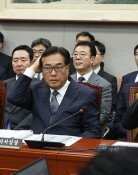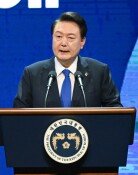Growth Rate For Second Quarter Recorded Lowest Since Foreign Currency Crisis
Growth Rate For Second Quarter Recorded Lowest Since Foreign Currency Crisis
Posted August. 22, 2003 21:43,
Economic growth rate for this second quarter (from April to August) recorded 1.9 percent, which is the lowest in four years and six months.
The growth rate showed a reduction of 0.7 percent compared to the previous quarter (from January to March), which means a minus growth for the two consecutive quarters for the first time in five years. This can be a serious indicator that the current economy is in a deep recession.
The Bank of Korea announced on August 22nd that private consumption and facility investment have greatly decreased along with the slowdown of exports, only achieving a GDP growth of 1.9 percent for the second quarter compared to the same period last year, according to its temporary estimation.
This growth rate is the lowest since the fourth quarter of 1998 when the growth rate nose-dived by 5.9 percent due to the foreign currency crisis.
Especially, the second quarter`s real GDP that excluded seasonally-affecting factors slid down by 0.7 percent compared to the first quarter (-0.4 percent), continuing its downward spiral.
Recording a negative growth for two quarters in a row is the first time since the first (-7.1 percent) and second (-1.6 percent) quarter of 1998, right before the foreign currency crisis.
Economic Indicator Director at the Bank of Korea Cho Sung-jong said, Growth rate has been much lowered due to various factors such as reduced household consumptions, labor disputes and SARS. Even though consumptions would not be recovered as rapid as we expect, exports are rebounding at such a speed that the growth rate for the next quarter will stand much better.
Private consumption for the second quarter dropped by 2.2 percent compared to the same period last year because of much reduction in domestic and service consumption. A drop in private consumption is for the first time since the fourth quarter of 1998 (-9.2 percent).
Facility investment also went down by 0.8 percent for the first time since the fourth quarter of 2001 (-2.2 percent).
Real GDI, an indicator of national consumption power only rose by 0.2 percent compared to the same period last year since exports prices could not catch up with imports prices. The figure rather decreased by 2.0 percent compared to the previous quarter.
However, goods exports increased by 12 percent compared to the same period last year thanks to active businesses in semiconductors, automobiles and communications devices.
In summary, domestic consumption`s contribution to the final customer demand dropped to the negative 7.7 percent from 19.4 percent of the previous quarter while exports` contribution rose to 107.7 percent from 80.6 percent.
Joong-Hyun Park sanjuck@donga.com







